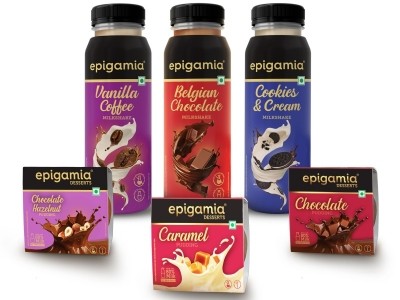Ethnic essentials: Experimental and hyperlocalised flavours find growing favour amongst ASEAN consumers

Hyperlocalisation refers to cuisines that are very specialised to a particular region or demographic, often covering very unique flavours or tastes, such as Jollof rice that originates from West Africa.
In the wake of the pandemic, there was a corresponding rise in consumer interest towards experimental cooking which also improved the recognition and appreciation of such hyperlocalised flavours.
“The ASEAN region is particularly conducive to this trend because there are so many different and unique cuisines here, not to mention nearby Asian flavour influences such as yuzu notes from Japan or fermented notes from South Korea,” natural flavours and colours expert Mane Kancor Team Leader Marketing Jeevan Injodey told FoodNavigator-Asia at the recent Fi Asia 2023 show in Bangkok, Thailand.
“The whole concept of hyperlocalised flavours is that these are closely inspired by local ethnic cuisines, and with the rising interest in this area there is a lot of potential to develop various products or dishes based on this hyperlocalisation.
“However, many food companies tend to struggle with getting the aspect of the correct flavour notes as well as hitting minimum order quantities when it comes to developing these, especially when many different types of spices and ingredients are involved – and we are looking to plug this gap with our Spice Blocs, ready-mixed combinations of spices that can be used versatilely to convey these flavours.”
But in tandem with hyperlocalisation, many ASEAN consumers and especially younger, well-travelled demographics are increasingly looking to experiment with the tastes and flavours of their products, whilst still maintaining a certain health and wellness requirement throughout this experimentation.
“Consumers want to try cuisines that are not only familiar to them, but from other markets as well – this is especially obvious when cultural influences come into play,” the firm’s Product Manager Rakesh Menon added.
“For example, the influence of K-pop and K-dramas definitely pushed the popularity of flavours such as kimchi and gochujang to new heights in many markets within the ASEAN region – and brands have had to adapt accordingly to what markets want by innovating products according to these flavour profiles.
“This is a theme that has had to be integrated across all the categories, whether the products be snacks or RTE meals or beverages and so on.”
In tandem with the experimental flavours trend, Injodev noted that there has been a rise in fusion flavours, combining flavours or spices traditionally considered sweet, with another that is considered savoury.
“This flavour fusion is becoming very popular in areas such as beverages, bakery and also dessert items,” he said.
“For instance not long ago this item called paan masala – essentially a combination of spices wrapped in betel leaf – was trending in India, and this was turned into an ice cream which became quite popular.
“Other examples include fruit and spice combinations such as apple cinnamon, pineapple ginger, mango chilli and so on.”
Of note regarding paan masala is that the original product is considered carcinogenic and toxic at the genetic level, so its consumption is not medically encouraged, but it is a very different story when only the flavour notes are utilised in a product such as an ice cream.
Encapsulating flavour
One of the most difficult aspects of conveying flavour in retail products such as snacks and RTE items is the stability of aroma, as the absence of aroma in a product can leave it tasting flat.
The traditional method of using dried spices has been used for millennia to add flavour and aroma to dishes, but if not meant for a product that is to be consumed immediately, new food technology needs to come into play.
“We have found that the encapsulation of spices serves to lock in flavour and aroma molecules that are only released upon the addition of hot water,” he added.
“This helps to retain the overall impact of the spice for as long as possible, so that when it is finally released, there will be a burst of the flavour profile on the tongue upon consumption.”

















